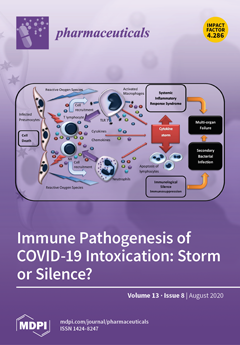Introduction: [
68Ga]Ga-DO3A-VS-Cys
40-Tuna-2 (previously published as [
68Ga]Ga-DO3A-VS-Cys
40-S01-GCG) has shown high-affinity specific binding to the glucagon receptor (GCGR) in vitro and in vivo in rats and non-human primates in our previous studies, confirming the suitability of the tracer for drug development applications in humans. The manufacturing process of [
68Ga]Ga-DO3A-VS-Cys
40-Tuna-2 was automated for clinical use to meet the radiation safety and good manufacturing practice (GMP) requirements.
Methods: The automated synthesis platform (Modular-Lab PharmTrace, Eckert & Ziegler, Eurotope, Germany), disposable cassettes for
68Ga-labeling, and pharmaceutical-grade
68Ge/
68Ga generator (GalliaPharm
®) used in the study were purchased from Eckert & Ziegler. The parameters such as time, temperature, precursor concentration, radical scavenger, buffer concentration, and pH, as well as product purification step, were investigated and optimized. Process optimization was conducted with regard to product quality and quantity, as well as process reproducibility. The active pharmaceutical ingredient starting material DO3A-VS-Cys
40-Tuna-2 (GMP-grade) was provided by Sanofi Aventis.
Results: The reproducible and GMP-compliant automated production of [
68Ga]Ga-DO3A-VS-Cys
40-Tuna-2 with on-line documentation was developed. The non-decay-corrected radiochemical yield was 45.2 ± 2.5% (
n = 3, process validation) at the end of the synthesis with a labeling synthesis duration of 38 min and a quality controlincluding release procedure of 20 min. The radiochemical purity of the product was 98.9 ± 0.6% (
n = 17) with the total amount of the peptide in the preparation of 48 ± 2 µg (
n = 3, process validation). Radionuclidic purity, sterility, endotoxin content, residual solvent content, and sterile filter integrity tests met the acceptance criteria. The product was stable at ambient temperature for at least 2 h.
Conclusion: The fully automated GMP-compliant manufacturing process was developed and thoroughly validated. The resulting [
68Ga]Ga-DO3A-VS-Cys
40-Tuna-2 was used in a clinical study for accurate quantification of GCGR occupancy by a dual anti-diabetic drug in vivo in humans.
Full article






